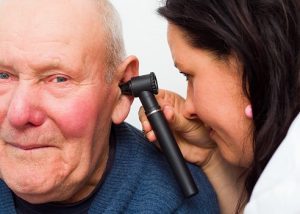 In case you missed it, here is Bel Marra Health’s weekly health news roundup, featuring information on ruptured eardrums, stomach bloating, clay-colored stool, and osteoarthritis.
In case you missed it, here is Bel Marra Health’s weekly health news roundup, featuring information on ruptured eardrums, stomach bloating, clay-colored stool, and osteoarthritis.
Ruptured eardrum (perforated eardrum): Causes, treatment, and prevention tips
A ruptured or perforated eardrum is the term used for a hole or tear in the tissue within the ear that separates the ear canal from the eardrum or middle ear. While uncomfortable, this condition often resolves itself within a few weeks so long as the ear is kept dry and free of infection. Continue reading to learn how a perforated eardrum can affect your hearing, which signs and symptoms to look out for, and the causes and treatments for this condition. A perforated eardrum can cause some hearing loss that is dependent on the size of the hole or tear. The larger the hole, the more hearing loss experienced. Chronic ear infection due to the perforation can cause sustained hearing loss and tinnitus. Continue reading…
 Bloated stomach? Here are seven things you need to know
Bloated stomach? Here are seven things you need to know
Advertisement
We’ve all experienced bloating before. It’s the uncomfortable feeling as if your stomach is filled with air and growing. Your pants feel tighter, you may be gassier, and you’re just so uncomfortable you don’t even want to move.
Stomach bloating can occur for numerous reasons, but the more you know about bloating and what causes it the better you can prevent this highly uncomfortable feeling. Below you will find some interesting facts about bloating that can help you better understand what’s going on in your stomach and how to reduce bloating occurrence. Continue reading…
 Clay-colored stool or pale stool in adults: Causes and treatments
Clay-colored stool or pale stool in adults: Causes and treatments
The color of your stool may seem irrelevant. However, clay-colored or pale stool can be a cause for concern. Some people who experience pale stool ignore it, thinking there is nothing they can do about it. Read on to learn about the symptoms, causes, and treatments.
Normal looking stools are various shades of brown, and this is normally a result of a healthy diet. Clay-colored stools are pale, white, or look like clay or putty. This type of stool in adults can be the result of medical testing. For example, a barium enema—which is a special X-ray test of the large intestine—can be conducted to help uncover disease affecting the intestine. The inability to absorb fat properly may lead to light-colored stool. The term for this is “acholic” and it is usually a result of lack of bile.
Bile salts are released into stool by the liver and give them their brown color. When the liver is not producing enough bile, or when the flow of the bile is blocked, stools become clay colored. Pale-colored stool in adults is no reason for alarm if it only happens once in a while, but when it happens frequently, seeing a doctor is important to rule out illness or disease. Continue reading…
 Sedentary lifestyle and excess weight linked with difficult to treat heart failures
Sedentary lifestyle and excess weight linked with difficult to treat heart failures
Lack of exercise and excess body weight have been linked to heart conditions in the past, however, new research has found a connection between these factors and a difficult to treat form of heart failure.
Heart failure occurs when your heart has difficulty providing enough oxygenated blood to the various parts of your body and is split into two categories: heart failure with preserved ejection fraction (HFpEF) and heart failure with reduced ejection fraction (HFrEF).
Advertisement
HFpEF is the more difficult of the two to treat and has recently been linked to low levels of exercise and high BMIs—body mass indexes. HFpEF causes the heart to stiffen and become rigid, resisting expansion and interfering with its ability to properly pump blood throughout the body. In HFpEF, the heart is not able to relax enough, and in HFrEF, the heart is not able to squeeze enough. While many treatment methods exist for HFrEF, there are no evidence-based methods that are effective in treating HFpEF, making prevention of this type of heart failure specifically important. Continue reading…
 Lower your risk of osteoarthritis with this one thing
Lower your risk of osteoarthritis with this one thing
Osteoarthritis is a type of arthritis caused by wear and tear of the joints. This is most common among seniors as the accumulated years of joint movement wears down the cartilage – the protective layer in between the joints – which causes the bones to rub together. This can lead to intense pain, stiffness, and reduced mobility of the joint.
Although osteoarthritis can affect any joint, it is most commonly seen in the knees as they tend to be the most used and bear the most amount of weight. For this reason, you can lower your risk of osteoarthritis by maintaining a healthy weight, controlling your blood sugar, regularly exercising, properly nursing any injuries, and overall living a healthy lifestyle. Continue reading…
